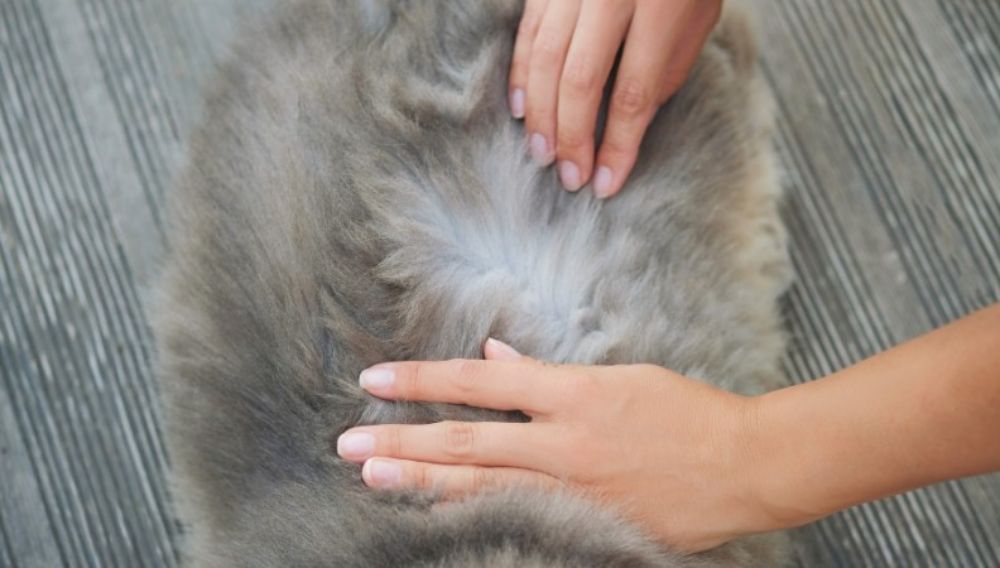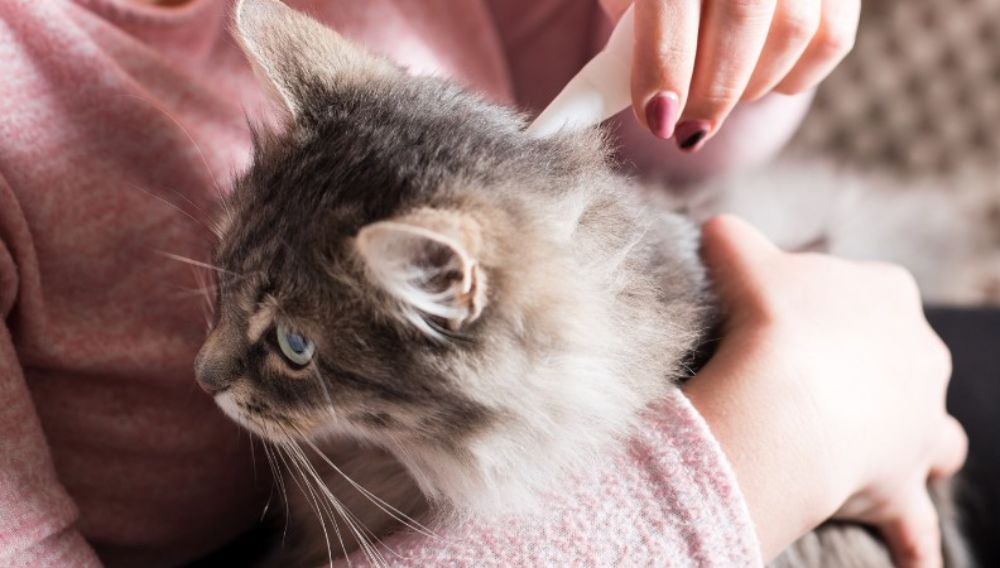Cats can get fleas fairly easily – even if they never venture outdoors - and this can be very uncomfortable for your poor pet. Fleas can also infect your cat with other parasites, and if left untreated, can make your cat develop allergies and other problems. Oh, and they also bite humans!
Nobody wants an itchy or poorly kitty, so it’s good to check your cat’s skin regularly. And remember, you’re not just looking for signs a cat has fleas. Cats can also contract other parasites, like ticks and mites, and develop skin conditions that need attention.
The next time you’re chilling with your little whiskered wonder, follow the steps below to check for any unwanted guests on your pet - in between cuddles of course!
How to Check Your Cat for Fleas
If your cat is scratching, licking or chewing an area of their coat more than usual, something may be irritating them. It could be a flea problem, so time to check their skin for any signs of fleas. You can do this by a using a flea comb or just by simply by simply looking at their skin and fur.
Use a Flea Comb on Your Cat’s Fur
Give your cat’s fur a gentle run-through with a flea comb and see if you catch any fleas or parasites. As well as insects, you’re also on the lookout for speckled black dirt. While cats do pick up harmless debris in their jaunts outside, this dirt is one of the signs a cat has fleas.
To test whether it came from fleas, place the dirt from combing your cat onto a wet paper towel. If it’s flea dirt, a red ring will form around the specks – what you are seeing is digested blood that the fleas leave behind in their droppings after feeding on your cat.
Look at the Skin Underneath Your Cat’s Fur

Part your cat’s fur with your fingers to see its skin. Be on the lookout for any parasites, signs of irritation, or lumps and bumps. If you find anything unusual, show it to a vet to be safe.
Why Fleas are Bad for Your Cat
Some cats can develop an allergy to flea saliva – a condition known as flea bite dermatitis or flea allergy dermatitis (FAD). This can lead to severe itching and inflammation, dermatitis and patches of hair loss. Fleas bite their feline hosts to feed on their blood and over time this blood loss can lead to anaemia, particularly in young or elderly cats.
Fleas can be infected with a parasite themselves – tapeworm. If your cat licks their coat when grooming and swallows an infected flea, the tapeworm can take up residence inside the cat and interfere with the absorption of important nutrients.
Kicking Off Cat Flea Treatment
If you’ve noticed signs that a cat has fleas, you’ll need to buy a good treatment that can cure your kitty. But be aware that 95% of fleas live in the surrounding environment, so it’s not enough to just treat the animal – you’ll need to de-flea your home too.
Other pets in the household will also need to be treated as the fleas don’t just stick to one host in a household, they’ll jump onto other cats and dogs in the home too. The cat flea is one of the most common flea species found in the dog population. If the flea infestation has become very large, the fleas can jump to humans as well. So if your cat has fleas and you notice a small, itchy red mark on your skin, you may have been bitten!
There are many different treatments available to destroy the fleas including tablets, injections, powders, sprays, drops and shampoos. The best options will depend on your home, your cat, and how bad the flea infestation is. Get some professional advice by talking to your vet about what to do next. Also, never ever use a dog flea treatment on your cat, as it contains ingredients that are dangerous for felines.

There are three ways to control fleas: you can kill the adult fleas, make the adult female fleas sterile or prevent the immature stages from developing. The last two methods are good at preventing reinfestation but don’t get rid of the adult fleas already there, so you may also have to use another product to do this.
Flea preventative control can be applied topically (on the skin) or systemically (by mouth or injection). Some products last for up to 1 month, others for up to 12 weeks, others for longer. The key to success is to follow the manufacturer’s recommendations.
Topical treatment can take the form of a “spot-on” liquid that’s put on to the back of the neck where the cat can’t reach to lick it off. There are also sprays, shampoos and powders that will kill the fleas at the time of treatment, but these often have to be regularly re-applied.
Flea collars can be effective. The chemicals from the collar diffuse over the pet’s coat to kill the adult fleas. Ask your vet to recommend the best product for your pet as those sold in the supermarket or pet stores may not always be very effective.
Cats can also be treated with tablets (some are chewable) or by injection.
In addition to treating your cat, you will also need to make sure your home isn’t infested with fleas. So get cleaning! Wash all bedding and vacuum the furniture, floors and skirting boards, remembering to throw away the vacuum bags to prevent further infestation. Using flea treatments designed to be applied to the environment in your home will keep flea numbers down. These products contain chemicals that prevent immature fleas from developing.
Fleas can breed all year round in our centrally-heated homes. Prevention is essential and your cat will need regular treatments all year round. Ask your vet for the best flea control options to get rid of the irritating problem of fleas.
Everypaw Cat Insurance
Everypaw's Cat Insurance comes with 24/7 unlimited access to vets and vet nurses that can help with your pet's health, care, nutrition and behaviour. So you can rest assured your kitty will be well looked after.
Additional content provided from Vetstream's Vetlexicon Felis - www.vetlexicon.com/felis
Vetlexicon is the world’s largest peer-reviewed online clinical reference source. All our content is written and peer-reviewed by over 1,000 of the world’s leading veterinarians, ensuring relevance, accuracy and quality.
- Vetstream Ltd (online) Fleas – an itchy business. In: Vetlexicon Felis. Vetstream Ltd, UK. Website: https://www.vetlexicon.com/treat/felis/client-information/fleas-an-itchy-business
- Vetstream Ltd, Elizabth Youens (online) Flea control. In: Vetlexicon Felis. Vetstream Ltd, UK. Website: https://www.vetlexicon.com/treat/felis/client-information/flea-control
- Rosanna Marsella, Ian Mason, Richard Squires, David Scarff (online) In: Vetlexicon Felis. Vetstream Ltd, UK. Website: https://www.vetlexicon.com/treat/felis/diseases/flea-bite-hypersensitivity
- Omowumi Ajao, Dieter Barutzki, Maggie Fisher, Linda Horspool, Rosanna Marsella (online) Flea control. In: Vetlexicon Felis. Vetstream Ltd, UK. Website: https://www.vetlexicon.com/treat/felis/freeform/flea-control